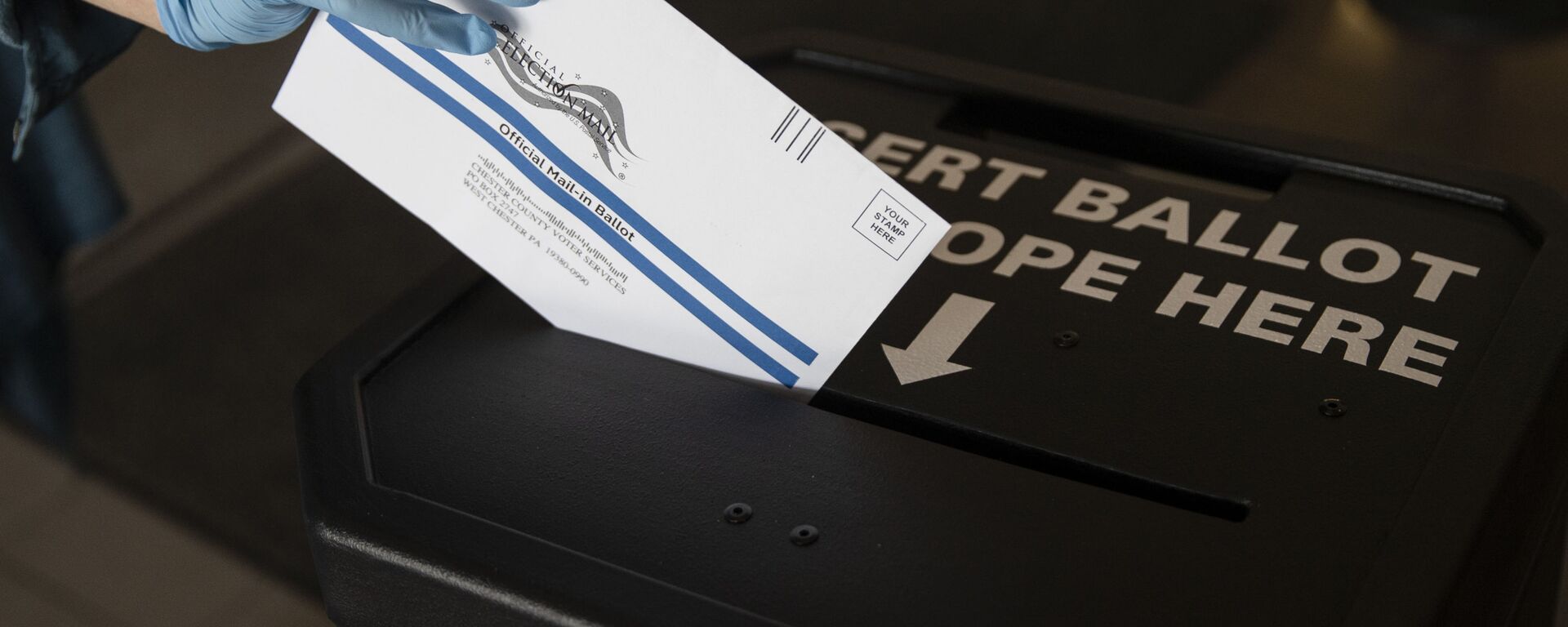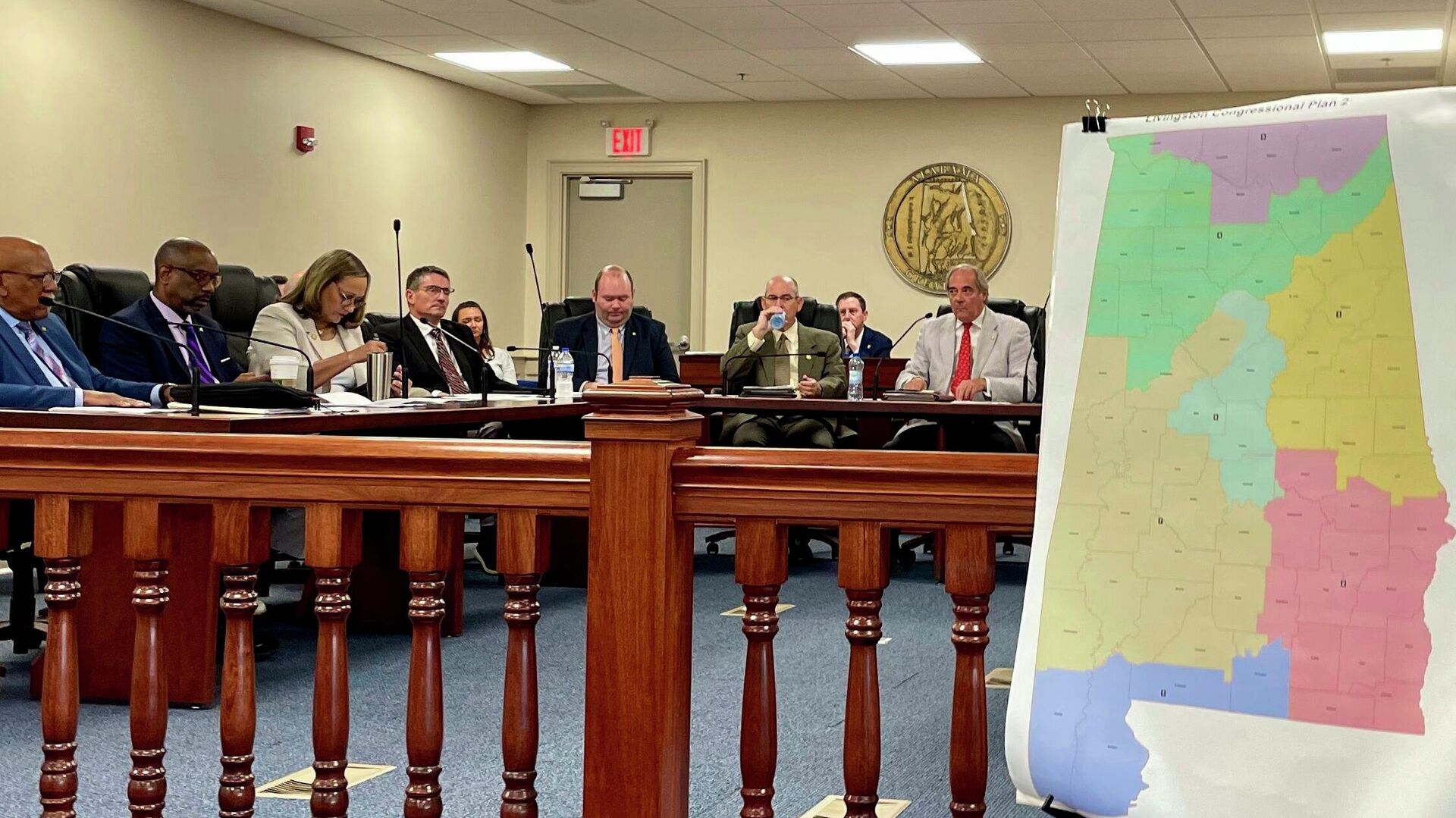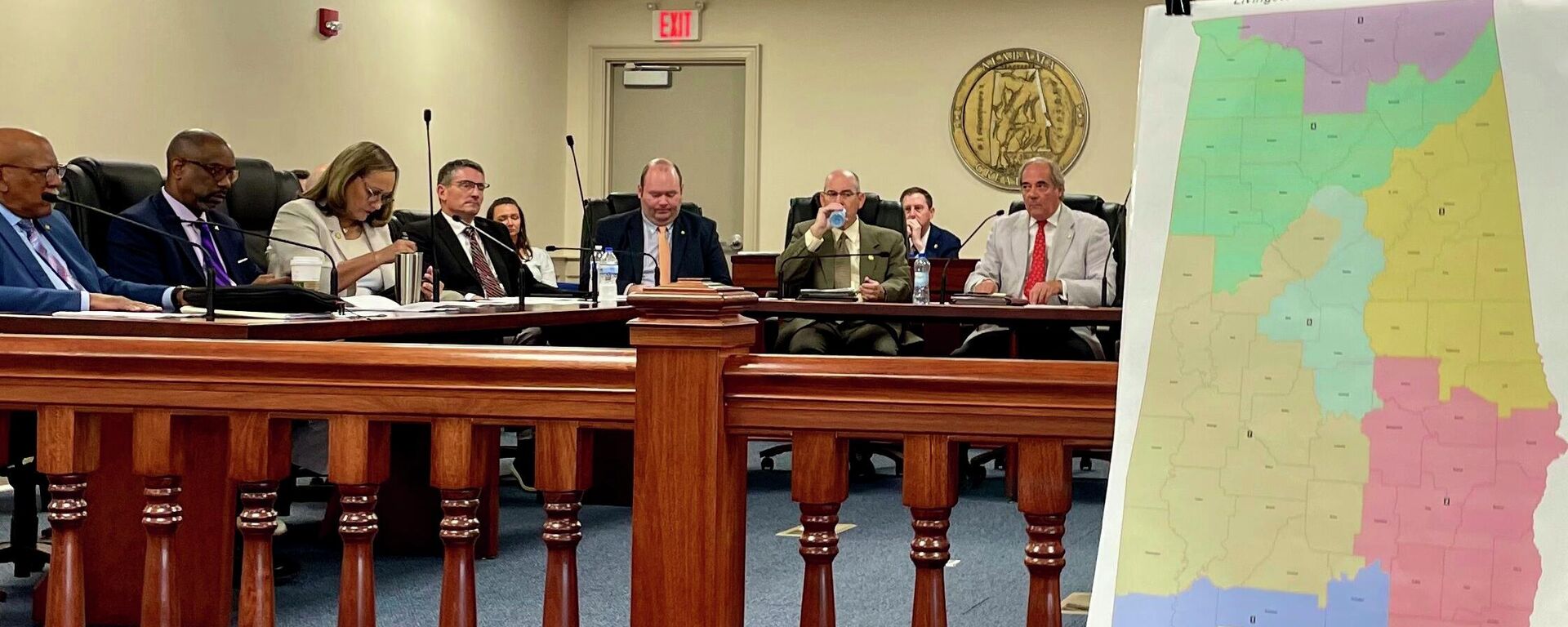https://sputnikglobe.com/20230927/scotus-rejects-alabama-effort-to-block-congressional-map-with-two-majority-black-districts-1113708379.html
SCOTUS Rejects Alabama Effort to Block Congressional Map With Two Majority-Black Districts
SCOTUS Rejects Alabama Effort to Block Congressional Map With Two Majority-Black Districts
Sputnik International
The Supreme Court rejected an emergency bid from Alabama to freeze a lower court's order that the state must draw a congressional map that includes two Black-majority districts.
2023-09-27T03:54+0000
2023-09-27T03:54+0000
2023-09-27T03:51+0000
americas
alabama
voting rights act
supreme court
republicans
gerrymandering
https://cdn1.img.sputnikglobe.com/img/07e7/07/18/1112122097_0:53:2242:1314_1920x0_80_0_0_1b93a320b457a4116b8055600a3007a0.jpg
The US Supreme Court rejected an attempt on Tuesday by Alabama to block a new congressional map required to include two majority-Black districts, setting the stage for implementing fresh redistricting lines ahead of the 2024 election cycle.Alabama had issued an emergency bid to block the new congressional map ordered by a lower court and upheld by the Supreme Court with a 5-4 ruling in June. There were no noted dissenters in denying Alabama’s emergency bid and the court did not explain its reasoning.In the 5-4 ruling, Justices John Roberts and Brett Kavanaugh joined the three liberal justices in ruling against Alabama’s request to freeze the lower court’s order.The ruling will affect the coming 2024 election. Alabama has seven seats in the House of Representatives. The six white majority districts are represented by Republicans and the one Black-majority district under the old map is represented by a Democrat.With two majority-Black districts in the states, Democrats will have high hopes for gaining another seat in the 2024 election.Alabama drew up a new congressional map but did not include a second majority-Black district, arguing its new map was legal even without the second majority-Black district; however, two lower courts rejected that map as well.In shooting down that map, the three-judge panel said officials were “disturbed” by Alabama’s actions and ordered a special master to draw up a new map. It also refused to make their order pending an appeal, prompting Alabama to plead its case to the Supreme Court, which affirmed the lower court’s ruling.The state had requested the Supreme Court take action by October 1 so that preparations for the election could begin.Alabama Attorney General Steve Marshall earlier argued that the new map kept communities together, unifying what has been described as the “Black Belt of the state.”Meanwhile, lawyers for the NAACP and the American Civil Liberties Union argued that concentrating Black voters in one district dilutes the power of Black voters in the state. In their challenge, which also included individual voters, they said the map violated Section 2 of the Voting Rights Act.Nearly 27% of Alabama residents are Black, according to the 2020 census.Marshall said after the ruling that the new map drawn by lawmakers was in support of “the radical pursuit of racial quotas,” and that it was made with a view of Alabama that is “stuck in 1963.”The three-judge panel will now move forward and pick one of the three maps drawn up by the special master, which were submitted to the panel on Monday.According to local media, one of the maps is based largely on the Plaintiff’s Remedial map, which was submitted during a special legislative session. Of the three, it is the only plan that includes two districts with a majority of Black residents of voting age, District 7 which is currently the only Black-majority district and District 2. However, District 2 would still have voted for the “Black-preferred candidate” in the vast majority contests, according to internal studies.The three-judge panel asked for two Black-majority districts or “something quite close to it.”District 2 is currently represented by Republican Barry Moore. An associate professor of political science at Auburn University told a local media outlet that Moore is “the pretty clear loser in the process” and predicts he is likely to lose his seat to a Democratic candidate in the 2024 election.He added the Republicans in the state overplayed their hand and put themselves in a worse position by submitting a map they should have known would never get through the courts.
https://sputnikglobe.com/20230905/federal-judges-to-make-new-alabama-election-map-after-lawmakers-ignore-scotus-ruling-1113139815.html
https://sputnikglobe.com/20230724/alabama-rejecting-scotus-gerrymandering-order-recalls-pro-segregation-massive-resistance-1112121900.html
americas
alabama
Sputnik International
feedback@sputniknews.com
+74956456601
MIA „Rossiya Segodnya“
2023
News
en_EN
Sputnik International
feedback@sputniknews.com
+74956456601
MIA „Rossiya Segodnya“
Sputnik International
feedback@sputniknews.com
+74956456601
MIA „Rossiya Segodnya“
alabama congressional map, racist voter suppression, gerrymandering, barry moore
alabama congressional map, racist voter suppression, gerrymandering, barry moore
SCOTUS Rejects Alabama Effort to Block Congressional Map With Two Majority-Black Districts
The Republican controlled state earlier attempted to create a new map without the inclusion of a second Black-majority district, despite a court order instructing them to do so.
The US Supreme Court rejected an attempt on Tuesday by Alabama to block a new congressional map required to include two majority-Black districts, setting the stage for implementing fresh redistricting lines ahead of the 2024 election cycle.
Alabama had issued an emergency bid to block the new congressional map ordered by a lower court and upheld by the Supreme Court with a 5-4 ruling in June. There were no noted dissenters in denying Alabama’s emergency bid and the court did not explain its reasoning.
In the 5-4 ruling, Justices John Roberts and Brett Kavanaugh joined the three liberal justices in ruling against Alabama’s request to freeze the lower court’s order.
The ruling will affect the coming 2024 election. Alabama has seven seats in the House of Representatives. The six white majority districts are represented by Republicans and the one Black-majority district under the old map is represented by a Democrat.
With two majority-Black districts in the states, Democrats will have high hopes for gaining another seat in the 2024 election.
Alabama drew up a new congressional map but did not include a second majority-Black district, arguing its new map was legal even without the second majority-Black district; however, two lower courts rejected that map as well.

5 September 2023, 21:17 GMT
In shooting down that map, the three-judge panel said officials were “disturbed” by Alabama’s actions and ordered a special master to draw up a new map. It also refused to make their order pending an appeal, prompting Alabama to plead its case to the Supreme Court, which affirmed the lower court’s ruling.
The state had requested the Supreme Court take action by October 1 so that preparations for the election could begin.
Alabama Attorney General Steve Marshall earlier argued that the new map kept communities together, unifying what has been described as the “Black Belt of the state.”
“The 2023 plan departed from existing district lines to unify the Black Belt, it split the minimum number of county lines necessary to equalize population among districts and it made the map significantly more compact through changes to each district,” Marshall argued.
Meanwhile, lawyers for the NAACP and the American Civil Liberties Union argued that concentrating Black voters in one district dilutes the power of Black voters in the state. In their challenge, which also included individual voters, they said the map violated Section 2 of the Voting Rights Act.
Nearly 27% of Alabama residents are Black, according to the 2020 census.
"Alabama's open defiance of the Voting Rights Act stops today," said Abha Khanna, a lawyer for the Elias Law Group that worked on the case.
Marshall said after the ruling that the new map drawn by lawmakers was in support of “the radical pursuit of racial quotas,” and that it was made with a view of Alabama that is “stuck in 1963.”
The three-judge panel will now move forward and pick one of the three maps drawn up by the special master, which were submitted to the panel on Monday.
According to local media, one of the maps is based largely on the Plaintiff’s Remedial map, which was submitted during a special legislative session. Of the three, it is the only plan that includes two districts with a majority of Black residents of voting age, District 7 which is currently the only Black-majority district and District 2. However, District 2 would still have voted for the “Black-preferred candidate” in the vast majority contests, according to internal studies.
The three-judge panel asked for two Black-majority districts or “something quite close to it.”
District 2 is currently represented by Republican Barry Moore. An associate professor of political science at Auburn University told a
local media outlet that Moore is “the pretty clear loser in the process” and predicts he is likely to lose his seat to a Democratic candidate in the 2024 election.
He added the Republicans in the state overplayed their hand and put themselves in a worse position by submitting a map they should have known would never get through the courts.
“If the Republicans in the legislature had been particularly clever, they might have drawn a map that at bare minimum could have at least had more of a chance of getting through the courts and could have still made someone like Barry Moore more competitive in District 2. They didn't do that and threw it over to the special master. Now, they are a loser. They lost and it's because they played a really bad hand.”




